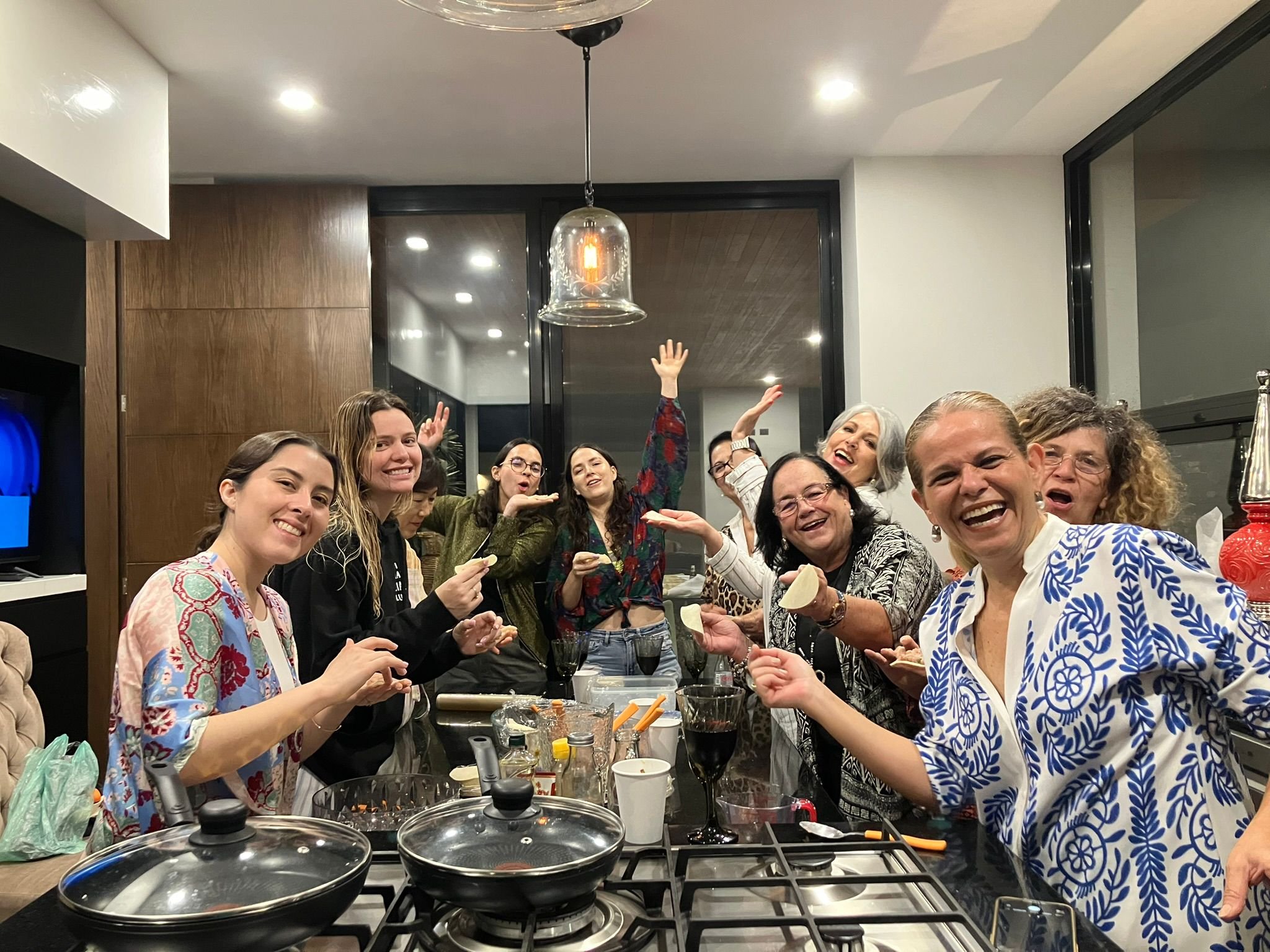Gyoza cooking class filled with LOVE and PASSION-Japanese home cooking class in México ‘2024
Home Cooking classes allow you to connect with people anywhere, regardless of location.
Gyoza cooking class in Mexico
Pease book from here.
The 18 days I spent in Aguascalientes, México turned out to be an extraordinary experience filled with unexpected joys and discoveries. Accompanying my husband on his long-term business trip, this visit after two years gave me the opportunity to host three cooking classes.Mexican people are globally renowned for their warmth and friendly nature. They are known for their kindness towards strangers and often display an open attitude. This national characteristic was vividly demonstrated in the Japanese cooking classes I conducted.For the gyoza-making class, I initially heard there would be about 4 participants. However, I learned beforehand that the number had swelled to over 10 people. This clearly showcases the sociability of Mexican people and their eagerness for new experiences. This unexpected development embodied the world-class hospitality that Mexican people possess.The increase in participants brought excitement and elation to my heart. My anticipation for a sense of achievement grew, and this unforeseen turn of events transformed into a deep feeling of fulfillment, allowing me to create the best Japanese home cooking class possible.
Tacos and gyoza are similar,aren’t they?The finished dumplings were eaten by hand.
Tacos and gyoza are similar,aren’t they?The finished dumplings were eaten by hand.
Tacos and gyoza (Japanese dumplings) share several similarities, primarily in their style of wrapping ingredients in dough and in some of their ingredients and cooking methods.
Tacos and gyoza are similar,aren’t they?The finished dumplings were eaten by hand.
Similarities in Ingredients and Shape
Wrapper:
Tacos use tortillas (mainly corn tortillas) folded around fillings.
Gyoza use thin wheat flour wrappers to enclose fillings, typically in a half-moon shape.
Both share the concept of wrapping ingredients in a thin dough.
Fillings:
Both tacos and gyoza use ingredients like meat, vegetables, and beans. The fillings for gyoza can even be adapted for tacos, allowing for creative fusion dishes like gyoza-style tacos.
Cultural Significance
Both are considered national dishes in their respective cultures:
Tacos are a staple of Mexican cuisine
While gyoza originated in China, they have become a popular national dish in Japan.
Both are deeply rooted in their respective food cultures and are common in home cooking and street food.
Cooking Methods and Eating Style
While both involve wrapped ingredients, tacos are typically folded and eaten, while gyoza are usually eaten whole after cooking. However, both can be eaten by hand, making them convenient and informal dining options.
Culinary Fusion
The similarities between tacos and gyoza have led to interesting culinary fusions and creative adaptations, showcasing the potential for cross-cultural culinary exchange.In conclusion, despite originating from different cultures, tacos and gyoza share numerous similarities in structure, ingredient versatility, cooking methods, and recent cultural fusions. These similarities have paved the way for innovative culinary creations, fostering a rich exchange between food cultures.
”Mi casa es tú casa🏠”
Mi casa es tú casa🏠
"How many times did I hear this phrase during my stay in México this time?"
The phrase "Mi casa es tú casa," which translates to "My house is your house," is a common expression in Mexican culture that conveys a warm invitation for guests to feel at home. It embodies hospitality and reflects the importance of family and community values in México. It is often used to express openness and generosity, suggesting that visitors are welcome to enjoy the comforts of the host's home as if it were their own. “Mi casa es tú casa” is my favorite Mexican phrase and also my motto for hospitality in my Japanese home cooking class is.
Cultural Background
To eat rice from the same pot(同じ釜の飯を食べる)
Tomokita is third from left.
In Latin American cultures, including México,(Although it may not be appropriate to categorize things in such broad terms...)family bonds are highly valued. This warmth extends to friends and acquaintances, with a custom of inviting new friends home and welcoming them as family members. This is not mere social etiquette but a genuine expression of hospitality.The concept of "sharing a meal together" resonates with Japanese culture as well. In Japan, inviting someone to your home for a meal is a way to deepen relationships and build stronger bonds.
The Importance of Hospitality
While hosting guests at home requires effort, it is a deeply meaningful act. In my home cooking classes, I offer lessons on simple hospitality dishes. These classes are not just about learning culinary skills but also provide valuable opportunities to strengthen connections with others. By making new friends and sharing enjoyable memories, participants can gain richer experiences.
Additionally, to learn practically, please join my Japanese home cooking class. you can directly experience authentic hospitality and Japanese cuisine.
Please book from here.
Words of Gratitude
Finally, I would like to express my gratitude to Claudia Lagler for approving this class, Maria Elena for providing the venue, Valeria Chao for her constant support, Aya for helping with the preparations on the day, and all the participants.
Thanks to all of you, we were able to have a successful and wonderful class!
With Much Love! VIVA! AGUASCALIENTES!




